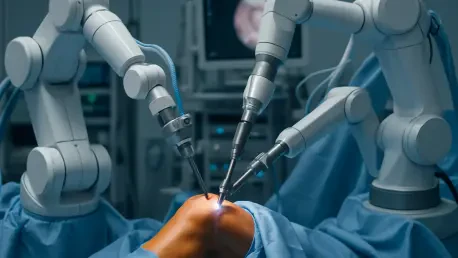Today, we’re thrilled to sit down with Dr. Oscar Vail, a leading expert in medical technology and orthopedic surgery advancements. With a deep understanding of cutting-edge tools like robotic surgical systems, Dr. Vail has been at the forefront of integrating technology into patient care. In this conversation, we’ll explore the groundbreaking introduction of the Zimmer Biomet ROSA Knee System at Southlake Health, the first hospital in York Region to adopt this technology. We’ll dive into how this robotic assistant enhances precision in knee replacement surgeries, the benefits it brings to patients, and what this means for the future of surgical care at Southlake.
Can you walk us through why Southlake Health adopting the ROSA Knee System is such a significant milestone for York Region?
Absolutely. Southlake being the first in York Region to implement the ROSA Knee System is a game-changer because it positions them as a leader in orthopedic innovation in the area. This technology brings a level of precision to knee replacement surgeries that wasn’t as accessible before. For patients, it means they don’t have to travel far to access state-of-the-art care—they can get world-class treatment right in their community, which is huge for improving access and outcomes.
How does the ROSA Knee System actually function during a knee replacement procedure?
The ROSA Knee System is a robotic surgical assistant that works alongside the surgeon. Before surgery, it gathers detailed data about the patient’s anatomy, and during the procedure, it continues to provide real-time feedback. This information helps map out the surgical plan with incredible accuracy, guiding the surgeon on where to make adjustments. It’s like having a high-tech navigator in the operating room, ensuring every step is tailored to the patient’s unique structure.
There’s a point often made that the surgeon remains in control, not the robot. Can you clarify how the surgeon and the ROSA system collaborate during surgery?
That’s an important distinction. The surgeon is always the one making the decisions and performing the surgery. The ROSA system is there to assist with specific tasks, like measuring soft tissues or guiding precise bone cuts. It provides data and suggestions, but the surgeon uses their expertise to interpret that information and act on it. This partnership allows for a level of customization that’s hard to achieve with traditional methods alone.
What kind of impact does the ROSA Knee System have on patient outcomes after knee replacement surgery?
The benefits for patients are significant. Because the system helps with such precise measurements and implant positioning, the knee implant often fits better, which can lead to more natural movement. Patients may feel like their new knee moves more like their original one. Additionally, this precision can reduce trauma to surrounding tissues, often resulting in a smoother and potentially faster recovery process, getting patients back to their lives sooner.
Southlake performs over 500 knee replacements annually. How do you think the ROSA system will influence their capacity or the quality of care they provide?
With over 500 surgeries a year, Southlake is already a busy hub for knee replacements. The ROSA system might not necessarily increase the number of surgeries right away due to factors like operating room availability, but it certainly elevates the quality of care. The precision and personalization it offers can lead to better long-term outcomes, fewer complications, and higher patient satisfaction. Over time, as they streamline its use, it could potentially allow them to handle more complex cases efficiently.
The phrase ‘the beginning of Southlake’s robotic journey’ was used to describe this milestone. What does that vision mean to you in terms of future possibilities?
I think it signals an exciting direction for Southlake. Starting with the ROSA Knee System opens the door to integrating other robotic technologies for different types of surgeries, whether it’s hip replacements or even spinal procedures. It reflects a commitment to staying at the forefront of medical innovation. I believe this is just the first step toward a future where robotics play a central role in enhancing surgical precision and patient care across various specialties at Southlake.
Looking ahead, what is your forecast for the role of robotics in orthopedic surgery over the next decade?
I’m incredibly optimistic about the trajectory of robotics in orthopedic surgery. Over the next ten years, I expect we’ll see even more advanced systems that integrate artificial intelligence to predict surgical outcomes or suggest optimal techniques in real-time. Robotics will likely become more accessible, not just in major centers but in smaller hospitals too, democratizing high-quality care. We’ll also see greater collaboration between surgeons and tech developers to refine these tools, ultimately making surgeries safer, faster, and more effective for patients worldwide.









